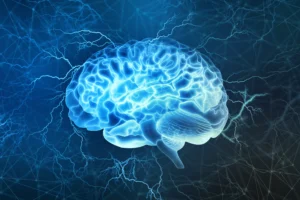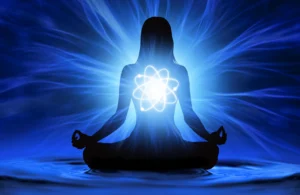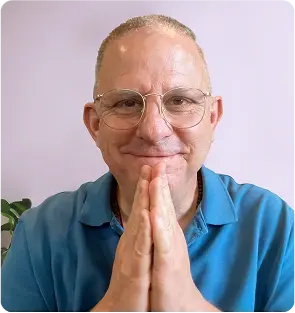When the world is noisy and constantly in motion, sitting still and turning inward with more mindful focus is both revolutionary and necessary. Yet, deep healing often begins through staying still and practicing stillness and being present with oneself.

Acting intentionally and slowing down is a way to create more space inside our own bodies to realign our nervous systems and recalibrate our natural state of balance and peace. More than just anecdotal or ancient wisdom, it’s also backed by science.
Here’s a deeper look at how going deeper into silence, meditation, and mindful focus unlocks your own healing pathways deep within your mind and body that you may not have considered in the past.
The Science Behind Silence and Healing: Why Silence Is a Powerful Healing Tool for the Brain & Body
Silence is often thought of as the absence of noise, but it’s so much more than that. In reality, it is a profound state of being where the body, mind, and soul can find deep rest. There are many scientific studies that already support the idea that silence impacts our physical health.
For example, a study conducted in 2006 by Luciano Bernardi, a cardiovascular researcher, found that moments of silence are more relaxing to the brain than even soothing music. Silence triggered growth in brain cells within the hippocampus, the part of the brain associated with memory, learning, and emotions. This increase in brain cells creates a fertile ground for emotional and mental healing.

The Role of Meditation in Healing: How Meditation Supports Deep Nervous System Healing
Meditation is the practice of sitting still with focused attention. It also takes the idea of silence to a whole other level. When we meditate, we’re working to embrace stillness and mindful focus while becoming more intentional about how we engage with our inner Self, which can have incredible effects on our physical body.
Research shows that meditation healing reduces stress, anxiety, and physical aches and pain by impacting our autonomic nervous system and our parasympathetic nervous system. The latter is what helps our bodies “rest and digest.” Without it, we would have a hard time relaxing and find ourselves in a continuous fight-or-flight response.
Although meditation healing has long been documented in ancient practices, Dr. Herbert Benson first coined the term “the relaxation response” in a broader medical setting. He could see how meditation and deep breathing actually triggered our bodies’ healing responses during his work at Harvard Medical School. He demonstrated that meditation could reduce blood pressure, improve heart health, and influence gene expression to promote healing and reduce inflammation.
When we meditate, we give our bodies a break from the constant flood of stress hormones that bombard us throughout the day. This break allows our system to regenerate and heal itself more efficiently, whether it’s healing from physical ailments, emotional trauma, or mental exhaustion.
4 Practical Ways to Begin Healing with Silence and Meditation

- Create a Sacred Space for Stillness: To heal through silence, you need a silent space to be alone with your thoughts and feelings. A small corner will do that’s comfortable and distraction-free. You should surround yourself with items that bring you peace, such as a candle, a crystal, or an image that reminds you of nature or divinity.
- Incorporate Daily Silent Meditation: Begin with short periods of silence for mindful focus—five to ten minutes per day—where you sit quietly and observe your breath. Don’t pressure yourself to “achieve” anything during this time. Focus on staying present and allow your mind and body to relax. Gradually increase the duration to 20 to 30 minutes as you become more comfortable with the process.
- Use Guided Meditations to Deepen Your Practice: If sitting in silence feels intimidating at first, use guided meditation healing as a helpful bridge. There are many resources available that lead you through mindful focus exercises or body scans, helping you focus on areas where your body or mind may be holding tension. Over time, those meditations can help you clear your mind and become more open.
- Try Yoga Nidra for Deep Nervous System Reset: Yoga Nidra, or “yogic sleep,” is a state of deep relaxation where the mind is still fully aware. It has been shown to reduce symptoms of anxiety, depression, and PTSD while helping to heal the nervous system.
Becoming Intentional: Directing Healing from Within
Because the mind and body are deeply interconnected, intentionality is the core of how we heal ourselves. What we believe, feel, and think profoundly influences our physical state. The cell biologist Dr. Bruce Lipton emphasized the role of belief and perception in health. His work in epigenetics shows that the environment of our cells—and our thoughts and emotions are part of that environment—can turn genes on or off. We are not simply the victims of our own DNA but can actually influence our biological processes through intentional, focused inner work.
To direct meditation healing within yourself, it’s essential to cultivate a deep trust in your body’s natural ability to heal. Below are some ways we can help guide along that process.
3 Mindful Techniques for Directing Inner Healing
1) Body Scanning for Awareness
To enhance mindful focus, you can do a mental scan of your body, starting from your head to toe, and take notice of any areas where you sense tension, pain, or discomfort. But instead of simply trying to “fix” these areas, the goal is to bring gentle awareness and compassion to them. Acknowledge the discomfort without resisting it, allow it to voice its pain and send healing energy to it.
2) Positive Visualization
Visualization has always been a powerful tool for healing. There have been countless studies showing that athletes who visualize themselves performing well actually improve their physical performance and winning, but this concept also applies to healing. Every day, take the time to visualize your body in a nourished and healthy state. See yourself as a whole and vibrant Self, and imagine light or healing energy moving through any areas of pain or disease. This intentional focus encourages your body to move toward that state of wholeness.
3) Mantras
Mantras and affirmations can help direct you through the healing process by aligning your thoughts with your intention to heal. Phrases like “I trust my body to heal,” “I am whole,” or “I release all that no longer serves me” can all be repeated during meditation healing or throughout the day to anchor your focus.
Awakening to New Pathways of Healing
Allowing ourselves to sit in silence and listen to the deeper parts of our being makes us more aware of our healing pathways that we haven’t considered before. These pathways could be emotional, physical, or even spiritual to you as they relieve a past trauma, an old belief, or embrace a new form of therapy or practice that feels aligned with your true Self.
How Meditation Helps Release Emotional Blocks for Deeper Healing
Many ancient practices and spiritual traditions emphasise that true healing comes from within, and our bodies are designed to heal themselves when we remove the obstacles in the way – stress, negative emotions, and limiting beliefs. Beyond healing, releasing negative emotions can also help open your senses.
- Emotional Release Through Meditation: It’s not unusual for physical ailments to have emotional or energetic roots. Meditation can bring these emotions to the surface, and once they’re acknowledged, they can be released and lead to the profound healing you need. Practices like Vipassana meditation encourage us to sit with the discomfort we haven’t been able to face before and observe our emotions without judgment until they finally dissolve and release us.
- Tapping into Universal Energy: Many ancient traditions tap into the idea of a Universal energy or life force known as prana in yoga, qi in Chinese medicine, or the Holy Spirit in Christian mysticism. Meditation healing and silence create the space for us to connect with this energy that allows it to flow directly through us and aid in our healing.
Trusting the Nonlinear Journey of Healing & Mindful Self-Discovery
When you embark on your own journey of healing through silence, meditation healing, and intentional, mindful focus, it’s important to remember that healing is not always linear. Some days you may feel connected to the Divine and some days feel more challenging and leave you feeling isolated or depleted. Trust the process and know that your body, mind, and spirit are deeply interconnected and designed to work in harmony.

Last updated: Sept. 11, 2025
Q&A
Q1: How does silence actually help the brain and body heal?
Silence triggers growth of brain cells in the hippocampus, reducing stress and improving emotional balance. It’s more restorative than music.
Q2: What happens to your nervous system during meditation?
Meditation activates the parasympathetic nervous system, reducing stress hormones, lowering blood pressure, and helping your body return to a natural state of balance.
Q3: Can visualization and mantras really help the body heal?
Yes. Visualization has been shown to improve physical outcomes even in athletes. Mantras align your thoughts and beliefs to support your body’s natural healing pathways.
Q4: Why do emotions sometimes come up during meditation?
Meditation can surface stored emotional pain or trauma. Acknowledging and gently witnessing these emotions helps them release, supporting deeper healing.
Q5: Is healing through meditation and silence a quick process?
Healing is rarely linear. It unfolds in cycles. Trust the process—your mind, body, and spirit are naturally designed to find balance over time.




